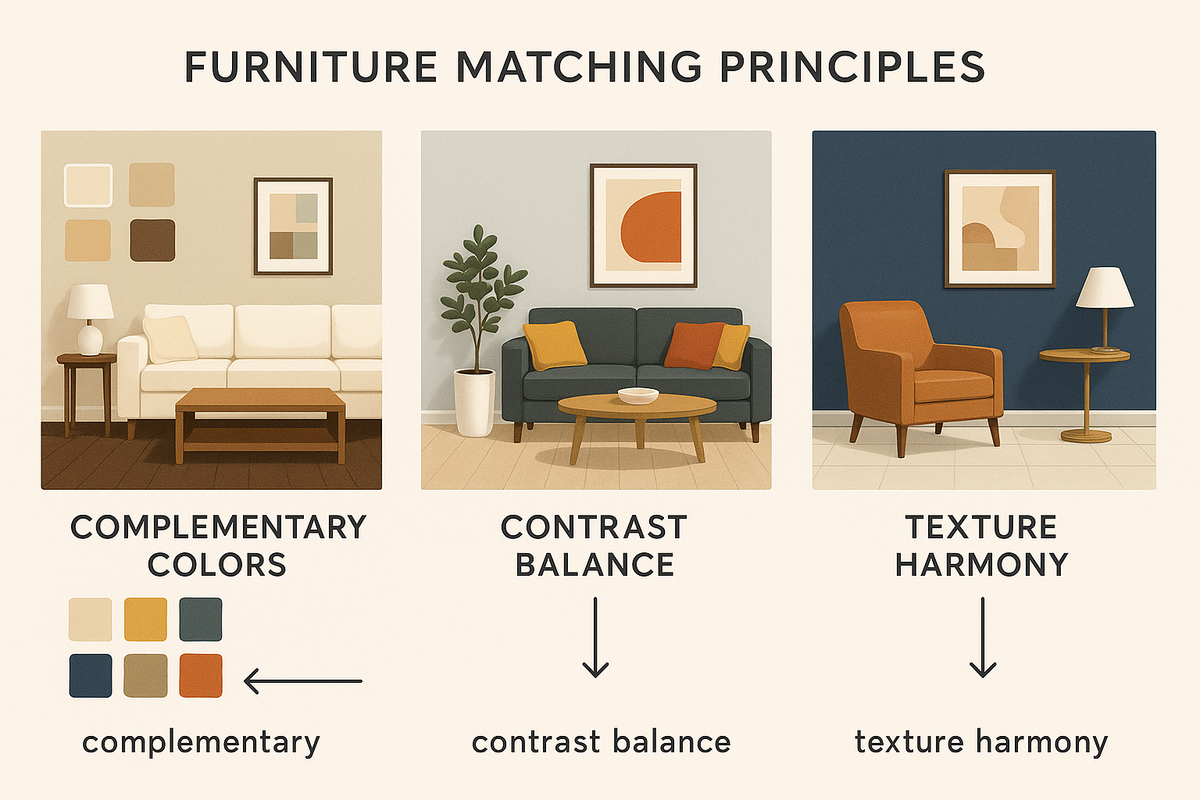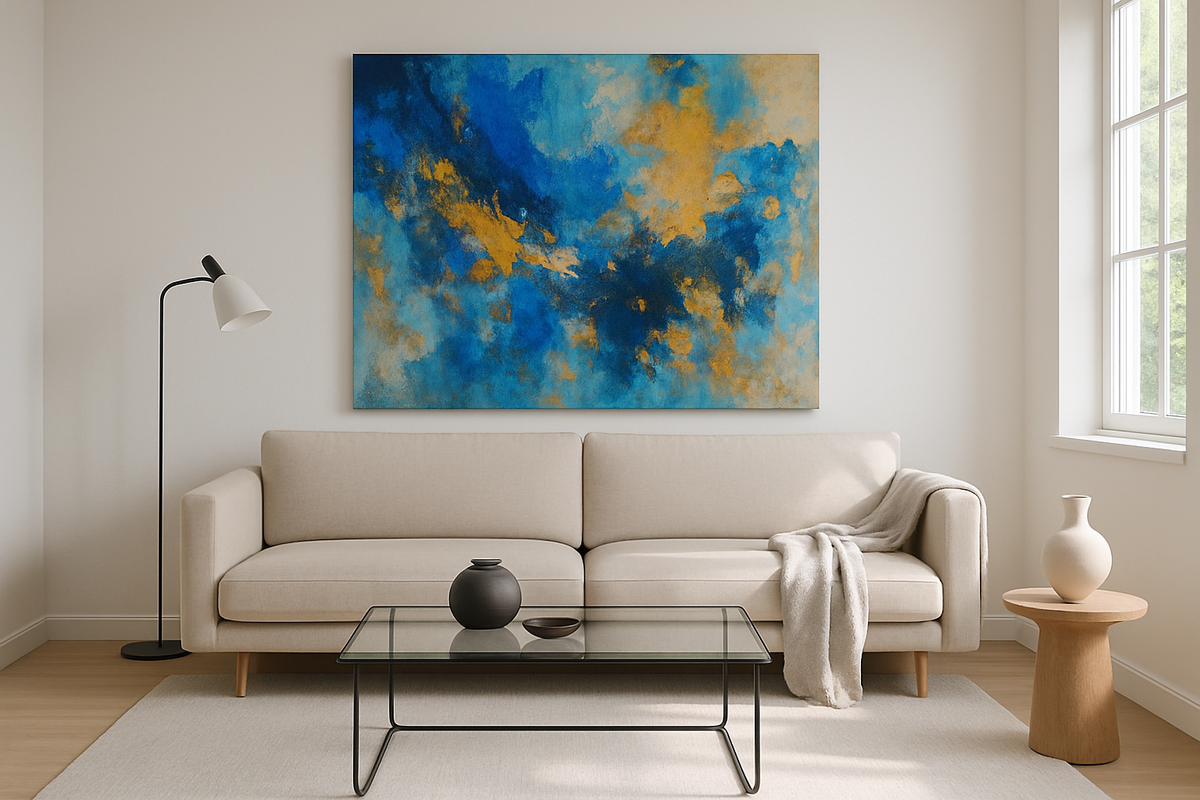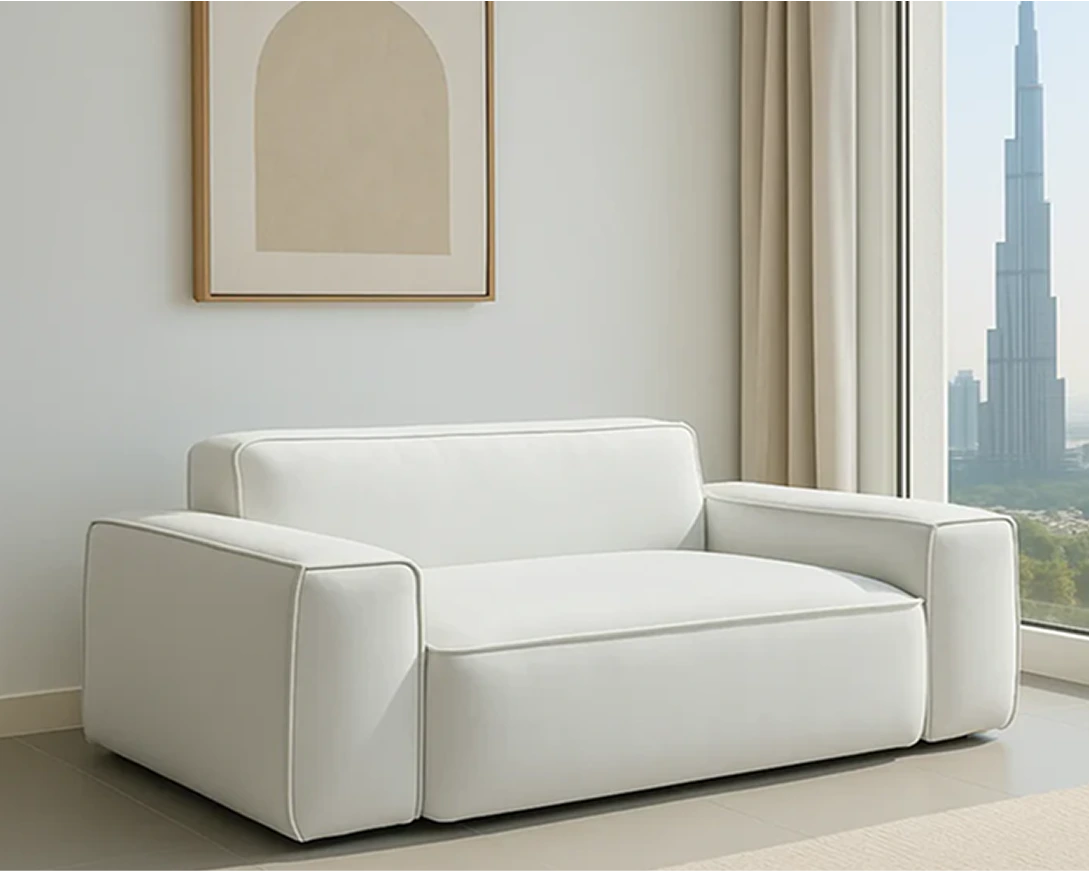Start with a focal point:
When arranging your living room furniture, it's important to have a focal point that draws attention and anchors the space. This could be a fireplace, a large window with a beautiful view, or even a TV. Arrange your furniture around this focal point to create a cohesive and inviting layout.
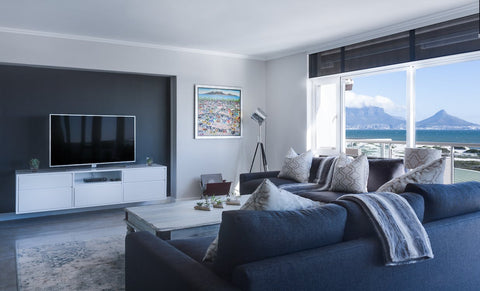
Photo by Jean van der Meulen from Pexels:
Consider the flow of traffic:
Take into account the natural flow of traffic in your living room. Ensure that there is enough space for people to move around comfortably without bumping into furniture. Arrange your furniture in a way that allows for easy movement and accessibility.
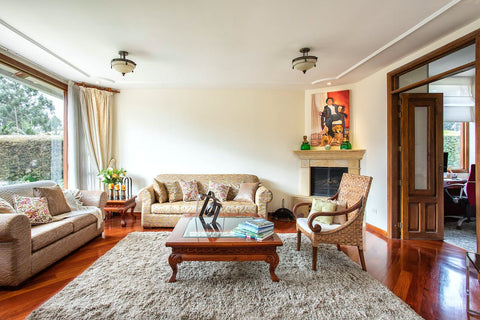
Photo by Gustavo Galeano Maz from Pexels:
Create conversation areas:
One of the key purposes of a living room is to facilitate conversation and socializing. To achieve this, create multiple conversation areas within the space. Place sofas and chairs facing each other to encourage interaction and make the room feel more inviting.
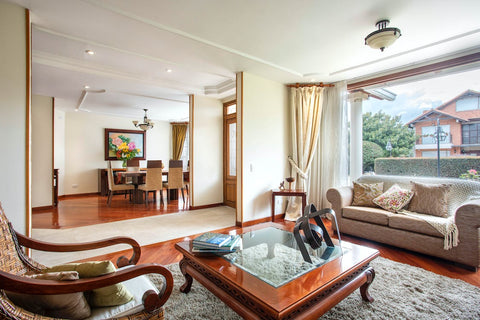
Photo by Gustavo Galeano Maz from Pexels:
Balance the room:
Achieve a sense of balance by distributing the furniture evenly throughout the room. Avoid placing all the furniture on one side, as it can make the space feel lopsided. Instead, aim for a symmetrical or asymmetrical arrangement that creates visual harmony.
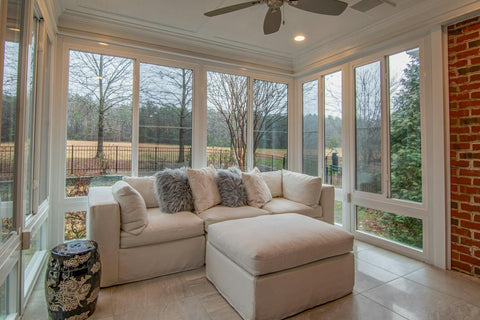
Photo by Curtis Adams from Pexels:
Scale your furniture:
Consider the size of your living room when selecting furniture pieces. Large furniture in a small room can make it feel cramped, while small furniture in a large room can make it appear empty. Choose furniture that is proportionate to the size of your space to create a balanced and harmonious arrangement.
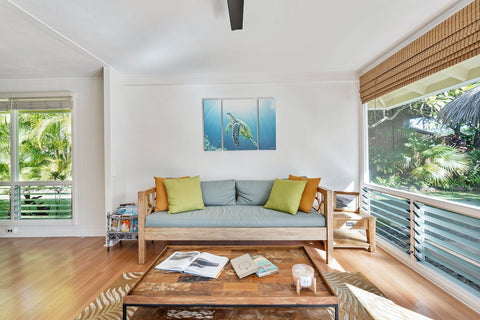
Photo by Jason Boyd from Pexels:
Utilize multifunctional furniture:
In a small living room, make the most of your space by using multifunctional furniture. Look for pieces that can serve multiple purposes, such as a coffee table with hidden storage or a sofa that can be converted into a bed. This will help maximize functionality without sacrificing style.
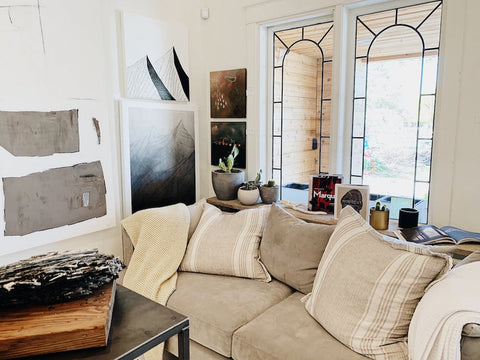
Photo by Solvej Nielsen from Pexels:
Experiment with different layouts:
Don't be afraid to try out different furniture arrangements to find the one that works best for your living room. Move pieces around, swap furniture from other rooms, or even consider renting furniture temporarily to see how it fits in your space. This experimentation can lead to surprising and creative solutions.Photo by Merve Bayar from Pexels:
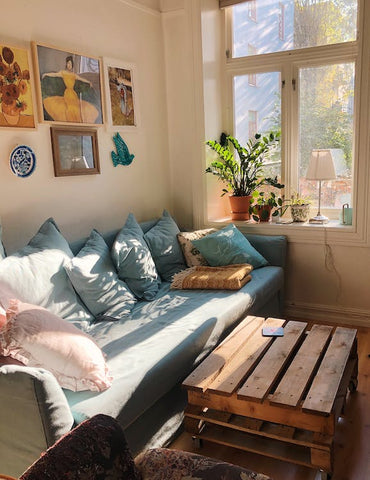
Consider the room's architecture:
Take into account the architectural features of your living room when arranging furniture. If you have a bay window or a nook, utilize these spaces by placing a cozy reading chair or a small table. Incorporating the room's unique features will add character and charm to your arrangement.
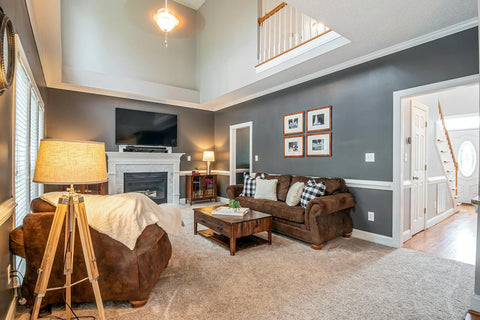
Photo by Curtis Adams from Pexels:
Create a focal wall:
If your living room lacks a natural focal point, create one by using a focal wall. Paint it in a bold color, hang a large piece of artwork, or install a statement wallpaper. This will draw attention and give your furniture arrangement a clear focal point to revolve around.
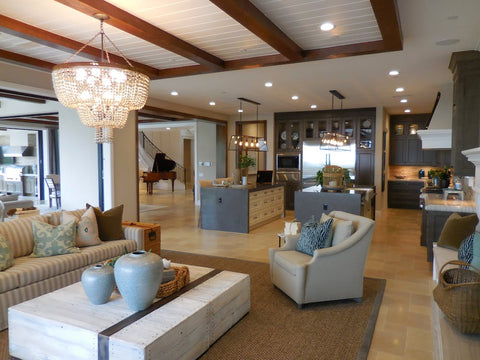
Photo by Bruce Clark from Pexels:
Use rugs to define spaces:
Rugs can be a great tool for defining different areas within your living room. Place a rug under the seating area to anchor it and create a sense of coziness. Use different rugs to separate the living area from the dining area or any other distinct zones in the room.

Photo by Curtis Adams from Pexels:
Incorporate storage solutions:
To keep your living room organized and clutter-free, incorporate storage solutions into your furniture arrangement. Look for coffee tables with built-in storage, ottomans with hidden compartments, or bookshelves that double as room dividers. These functional pieces will help maintain a clean and tidy space.
Consider the lighting:
Lighting plays a crucial role in creating the right ambiance in your living room. Incorporate a mix of overhead lighting, task lighting, and ambient lighting to achieve a well-lit and inviting space. Use floor lamps, table lamps, and pendant lights strategically to highlight different areas and add depth to your arrangement.

Photo by Curtis Adams from Pexels:
Add personal touches:
Make your living room feel like home by adding personal touches and decor items that reflect your style and personality. Display family photos, showcase your favorite artwork, or incorporate sentimental objects into your arrangement. These personal touches will make your living room feel warm and inviting.
Don't forget about comfort:
While aesthetics are important, don't forget about comfort when arranging your living room furniture. Choose sofas and chairs that are comfortable to sit on for extended periods. Add plush cushions and throws to make the space cozy and inviting. Comfort should always be a priority in your furniture arrangement.
Consider the view:
If your living room has a beautiful view, make sure to arrange your furniture in a way that takes advantage of it. Position seating areas to face the window or patio doors, allowing you to enjoy the scenery while relaxing in your living room. This will create a seamless connection between the indoors and outdoors.
Embrace symmetry:
Symmetry can create a sense of order and balance in your living room. Arrange your furniture symmetrically by placing identical pieces on either side of a focal point. This will create a visually pleasing and harmonious arrangement that is pleasing to the eye.
Mix and match furniture styles:
Don't be afraid to mix and match different furniture styles to create an eclectic and unique arrangement. Combine modern and traditional pieces, or mix vintage and contemporary styles. This will add visual interest and personality to your living room.
Use mirrors strategically:
Mirrors can be a powerful tool in interior design, especially in small living rooms. Place a large mirror on a wall opposite a window to reflect natural light and make the space appear larger. Mirrors can also be used to create a focal point or to enhance the overall aesthetic of your arrangement.
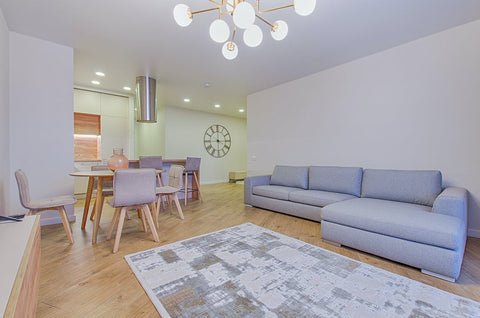
Photo by Vecislavas Popa from Pexels:
Consider the height of your furniture:
When arranging your living room furniture, take into account the height of each piece. Avoid placing tall furniture in front of windows or blocking the view. Opt for low-profile furniture to create an open and airy feel in your living room.
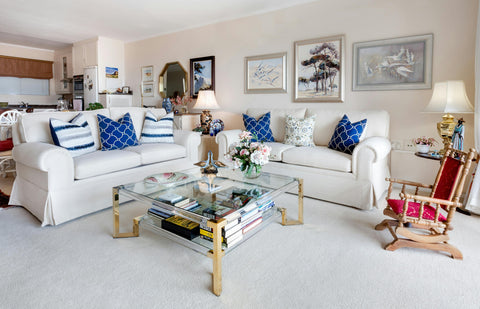
Photo by Jean van der Meulen from Pexels:
Create a cozy reading nook:
If you have a corner or a small space in your living room, transform it into a cozy reading nook. Place a comfortable armchair or a chaise lounge, add a side table for books and a reading lamp, and create a serene and inviting spot for relaxation.

Photo by Jean van der Meulen from Pexels:
Incorporate natural elements:
Bring the outdoors in by incorporating natural elements into your living room furniture arrangement. Use potted plants, fresh flowers, or natural materials like wood and rattan to add warmth and texture to your space. This will create a calming and organic atmosphere.
Consider the acoustics:
If you enjoy listening to music or watching movies in your living room, consider the acoustics when arranging your furniture. Position speakers and audio equipment strategically to optimize sound quality. Use rugs, curtains, and upholstered furniture to absorb sound and reduce echo.
Create a gallery wall:
Showcase your favorite artwork and photographs by creating a gallery wall in your living room. Arrange frames of different sizes and shapes to create an eye-catching display. This will add personality and visual interest to your furniture arrangement.
Use a color palette:
Choose a color palette for your living room and incorporate it into your furniture arrangement. Use complementary colors or different shades of the same color to create a cohesive and harmonious look. This will tie the different elements of your arrangement together and create a unified space.
Consider the function of the room:
Before arranging your living room furniture, consider how you will be using the space. If you frequently entertain guests, prioritize seating areas and create a layout that encourages conversation. If you use the room primarily for watching TV, ensure that the seating is positioned for optimal viewing.
Create a focal point with a statement piece:
If you don't have a natural focal point in your living room, create one with a statement piece of furniture. This could be a bold-colored sofa, a unique coffee table, or a striking piece of artwork. Arrange the rest of your furniture around this statement piece to create a visually captivating arrangement.
Use a variety of textures:
Incorporate different textures into your living room furniture arrangement to add depth and visual interest. Mix smooth and rough textures, soft and hard surfaces, and different fabrics to create a tactile and inviting space. This will make your arrangement visually appealing and engaging.
Consider the scale of your accessories:
When accessorizing your living room, consider the scale of your furniture and the size of the room. Avoid using oversized or undersized accessories that can throw off the balance of your arrangement. Choose accessories that are proportionate to the furniture and the space to create a harmonious look.
Create a designated TV area:
If watching TV is a primary activity in your living room, create a designated TV unit area. Position the TV at eye level and arrange seating around it for optimal viewing. Consider using a media console or a wall-mounted TV to save space and create a streamlined look.
Use a mix of seating options:
Instead of sticking to one type of seating, mix and match different seating options in your living room. Combine sofas, armchairs, ottomans, and even floor cushions to create a versatile and dynamic arrangement. This will provide options for different activities and accommodate varying numbers of guests.
Consider the needs of your family:
When arranging your living room furniture, consider the needs and lifestyle of your family. If you have young children, prioritize durability and easy-to-clean fabrics. If you have pets, choose furniture that is pet-friendly and resistant to scratches. Tailor your arrangement to suit the specific needs of your household.
Use a room divider:
If your living room serves multiple purposes, such as a combined living and dining area, use a room divider to create separation. This could be a bookshelf, a folding screen, or even a large indoor plant. This will visually define the different areas and create a sense of privacy.
Incorporate storage ottomans:
Storage ottomans are not only functional but also versatile in a living room furniture arrangement. Use them as extra seating, as a coffee table, or as a footrest. The hidden storage compartment is perfect for stashing away blankets, pillows, or other items to keep your living room tidy.
Consider the shape of your furniture:
The shape of your furniture can greatly impact the overall look and feel of your living room. Curved furniture can soften the lines of a rectangular room, while angular furniture can add a modern and sleek touch. Consider the shape of your furniture pieces and how they interact with the space.
Use a mix of open and closed storage:
When arranging your living room furniture, incorporate a mix of open and closed storage options. Open shelves can display decorative items and books, while closed cabinets can hide away clutter. This combination will create a balanced and organized look in your living room.
Incorporate a statement rug:
A statement rug can be a great starting point for your living room furniture arrangement. Choose a rug with a bold pattern or vibrant colors to add visual interest and anchor the space. Arrange your furniture around the rug to create a cohesive and stylish look.
Consider the height of your ceiling:
The height of your ceiling can influence the overall feel of your living room. If you have high ceilings, consider using tall furniture pieces and vertical elements to fill the space. If you have low ceilings, opt for lower-profile furniture and avoid hanging large artwork or light fixtures that can make the room feel cramped.
Use nesting tables:
Nesting tables are a versatile and space-saving addition to a living room furniture arrangement. They can be used as side tables or pulled apart to create additional surface space when needed. Nesting tables are perfect for small living rooms or for those who like to entertain and need extra table space.
Create a cozy corner:
If you have a small living room, create a cozy corner by placing a comfortable chair or a small loveseat in a corner. Add a floor lamp, a side table, and some cushions to create a cozy and intimate spot for reading or relaxation. This will maximize the use of space and create a welcoming atmosphere.
Consider the view from different angles:
When arranging your living room furniture, consider the view from different angles within the room. Ensure that the furniture arrangement looks pleasing from all perspectives and takes advantage of any scenic views or architectural features. This will create a visually appealing and well-thought-out arrangement.
In conclusion, arranging your living room furniture requires careful consideration of various factors such as focal points, traffic flow, and the overall function of the room. By following these tips and experimenting with different layouts, you can create a stylish and functional living room arrangement that suits your personal style and enhances your everyday living experience. Remember to incorporate your own personal touches and make the space comfortable and inviting for both you and your guests. For more inspiration and furniture options, visit www.Klekktic.com.
| Idea | Summary |
|---|---|
| Start with a focal point | Arrange furniture around a focal point like a fireplace or TV |
| Consider the flow of traffic | Ensure easy movement and accessibility in the room |
| Create conversation areas | Arrange seating to encourage interaction |
| Balance the room | Distribute furniture evenly for visual harmony |
| Scale your furniture | Choose furniture proportionate to the size of the room |
| Utilize multifunctional furniture | Maximize functionality in a small space |
| Experiment with different layouts | Try out different furniture arrangements |
| Consider the room's architecture | Incorporate unique architectural features |
| Create a focal wall | Use a bold color, artwork, or wallpaper |
| Use rugs to define spaces | Separate different areas with rugs |
| Incorporate storage solutions | Keep the room organized and clutter-free |
| Consider the lighting | Use a mix of overhead, task, and ambient lighting |
| Add personal touches | Reflect your style and personality in the decor |
| Don't forget about comfort | Choose comfortable seating and add cozy elements |
| Consider the view | Arrange furniture to take advantage of a beautiful view |
| Embrace symmetry | Create a visually pleasing and balanced arrangement |
| Mix and match furniture styles | Combine different styles for an eclectic look |
| Use mirrors strategically | Reflect light and create the illusion of space |
| Consider the height of your furniture | Avoid blocking windows or views |
| Create a cozy reading nook | Transform a corner into a relaxing spot |
| Incorporate natural elements | Bring in plants and natural materials |
| Consider the acoustics | Position speakers and use sound-absorbing materials |
| Create a gallery wall | Display artwork and photographs |
| Use a color palette | Choose a cohesive color scheme |
| Consider the function of the room | Arrange furniture based on how the room will be used |
| Create a focal point with a statement piece | Use a bold furniture piece as a focal point |
| Use a variety of textures | Mix different textures for visual interest |
| Consider the scale of your accessories | Choose accessories that are proportionate to the furniture |
| Create a designated TV area | Position seating for optimal viewing |
| Use a mix of seating options | Combine different seating options for versatility |
| Consider the needs of your family | Prioritize durability and pet-friendly options |
| Use a room divider | Create separation in a multi-purpose room |
| Incorporate storage ottomans | Utilize hidden storage for a tidy space |
| Consider the shape of your furniture | Choose furniture shapes that complement the room |
| Use a mix of open and closed storage | Balance display and hidden storage options |
| Incorporate a statement rug | Use a bold rug as a focal point |
| Consider the height of your ceiling | Adapt furniture and decor to the ceiling height |
| Use nesting tables | Save space with versatile nesting tables |
| Create a cozy corner | Utilize a small corner for relaxation |
| Consider the view from different angles | Ensure a pleasing view from all perspectives |
FAQ
1. How do I start arranging my living room furniture?
To start arranging your living room furniture, identify a focal point such as a fireplace or TV and arrange the furniture around it.
2. How can I create conversation areas in my living room?
Create conversation areas by placing sofas and chairs facing each other to encourage interaction and socializing.
3. What should I consider when arranging furniture in a small living room?
In a small living room, consider using multifunctional furniture, incorporating storage solutions, and utilizing space-saving techniques like nesting tables.
4. How can I make my living room arrangement visually appealing?
To make your living room arrangement visually appealing, consider factors like balance, symmetry, incorporating a color palette, and mixing different furniture styles.
5. Which is more fashionable wall units or tv stands?
Both wall units and TV stands have their own style appeal. Wall units offer more storage and can act as a large statement piece, while TV stands are often more minimalist and flexible. The choice depends on your living room size and aesthetic preferences.
6. The ultimate guide to choose the perfect mini stool—what should I know?
A: When choosing the perfect mini stool, consider size, material, comfort, and style. Mini stools are versatile for extra seating or décor accents, and this guide helps you pick one that fits your space and needs perfectly.
7. What are some smart storage solutions for modern homes?
A: Smart storage solutions include multifunctional furniture like storage ottomans, wall-mounted shelves, built-in cabinets, and hidden compartments. These solutions help maximize space without cluttering your modern living area.
8. Can you share coffee table decor ideas to make it more classy?
A: Yes! Use a mix of books, candles, small plants, decorative trays, and elegant bowls to style your coffee table. Keeping it simple and cohesive with your room’s color scheme makes it look classy and inviting.
9. How can I make my living room feel cozy and comfortable?
Make your living room feel cozy and comfortable by choosing comfortable seating, adding soft cushions and throws, and incorporating personal touches that reflect your style and personality.
10. How can I optimize lighting in my living room arrangement?
Optimize lighting in your living room by using a mix of overhead, task, and ambient lighting. Consider natural light sources and use mirrors strategically to reflect light.
11. How can I create a visually pleasing arrangement in a multi-purpose living room?
In a multi-purpose living room, create separation and define different areas using room dividers, rugs, or furniture placement. Consider the needs of your family and prioritize functionality in the arrangement.
Lastly dont forget to check out Top 10 online furniture stores in saudi arabia for aesthetic design

